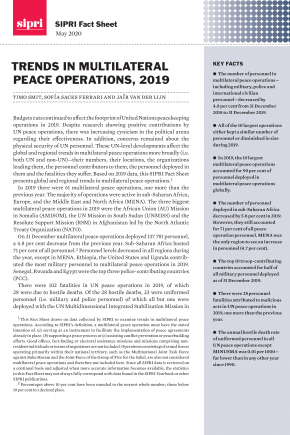Trends in Multilateral Peace Operations, 2019

Despite evidence of their positive impacts, United Nations peacekeeping operations continue to face budget cuts, cynicism in the political arena and concern over personnel physical safety. This context underpins the global and regional trends in multilateral peace operations in 2019.
This SIPRI Fact Sheet gives a snapshot of multilateral peace operations in 2019, with statistics on personnel, country contributions and fatalities for operations conducted by the UN, regional organizations or alliances, and ad hoc coalitions of states.
Global and regional trends in 2019 follow developments from recent years, including the downward trends associated with the reductions and closures of many UN peace operations since 2015. Sub-Saharan Africa continues to host the majority of operations and personnel, although these numbers have decreased, while the Middle East and North Africa is drawing attention for increasing numbers of operations and personnel. Hostile death rates for 2019 are largely attributed to the UN Multidimensional Integrated Stabilization Mission in Mali, the deadliest operation since its establishment in 2013, with all other operations demonstrating relatively low numbers of fatalities.


